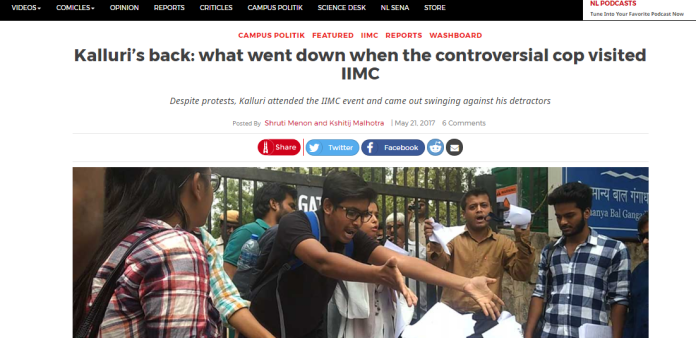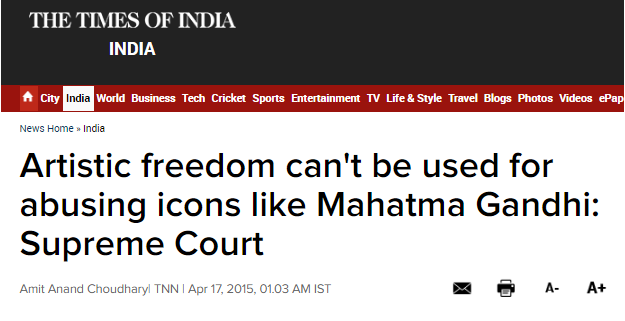The three years of Modi government has seen a number of policy decisions in the crucial Defence Ministry.
In February 2016, the Modi government fulfilled its promise to implement the long-pending one rank, one-pension (OROP) scheme. Around 2.6 million war veterans and 60,000 widows are the potential beneficiaries of the scheme.
In a departure from the past, the Indian Army carried out surgical strikes against terror launch pads in Pakistan-occupied Kashmir in September 2016.
In the last three years, the government took several steps for promoting participation of the private sector in indigenous defence productions. A report in Times of India suggests that since 2014-15, initial approvals have been accorded to around 140 capital procurement projects worth over Rs 4 lakh crore. Out of which 96 projects, worth over Rs 2.5 lakh crore, involves domestic production. Similarly, around 150 actual contracts worth over Rs 2 lakh crore were inked. These include around 80 capital procurement contracts worth Rs 1.50 lakh crore with foreign vendors.
The Defence Ministry, on 20 May, finalised a much-awaited Strategic Partnership model. The new initiative will boost the private sector’s role in defence production. Now, select private firms will be roped in to build military platforms like submarines and fighter jets in India in partnership with foreign entities.
India had signed a Rs 5,000-crore deal with the US for 145 M777 ultra-light howitzers in November last year breaking the Bofors jinx. Ending a three-decade wait for the Indian Army to induct long-range artillery guns after the Bofors scandal broke, two ultra-light howitzers (ULH) arrived in India on 18 May from the US. The guns, with a calibre of 155 mm, will be mostly deployed along the borders with China. While 25 guns will come to India in a fly-away condition, the rest will be assembled in India by the BAE Systems in partnership with Mahindra Defence.
India had inked $7.87 billion deal to purchase 36 Rafale fighters in September, 2016. This was the first fighter aircraft deal since the purchase of Sukhois from Russia in the late 1990s.
India Army, which has been pitching for its own dedicated fleet of attack helicopters since long, gets its way through. According to reports, Army is set to get 11 Apache multi-role attack helicopters from the US. Similarly, the Indian Air Force will acquire 15 US-made Chinook heavy-lift helicopters. It could be noted that India had contracted 22 Apache attack helicopters and 15 Chinook heavy-lift helicopters under a $3-billion deal with the US in September 2015 through the Foreign Military Sales program.
Undoubtedly, these are good beginnings. In its 2004 manifesto, the BJP had promised to bring in a “radical systemic changes” in the defence sector. The government has to do a lot to strengthen the defence sector and invigorate India’s defence production.
Though Defence Ministry under Narendra Modi-led NDA government has shifted from the status quo era of the UPA, the armed forces still continue to battle deficiencies in areas like submarines, fighter jets, multi-role helicopters and night-fighting capabilities.
The annual Defence Budget of the country is yet to see a visible hike. India’s defence budget for 2017-18 was Rs 2.74 lakh crore which is 1.63 per cent of country’s GDP. In sharp contrast, China’s military spending for 2017 is pegged at $152 billion, which is close to around 3 per cent of its GDP and three times higher than that of India’s defence budget.
Pitching for increased defence spending to enhance India’s strategic clout, Army chief General Bipin Rawat had said, “While we are developing our economy, the military is not getting its due share. I think here we need to draw a lesson from China.”
Not having a full-time Defence Minister and considering the crucial Defence Ministry as an “additional Ministry” is indeed a problem. It could be noted that Arun Jaitley is holding the additional charge of the Defence Ministry after Manohar Parrikar returned to Goa as the Chief Minister. Parrikar looked after the ministry for a little over two years after Jaitley held an additional charge of Defence Ministry for six months in 2014. The country needs a full-time Defence Minister.














